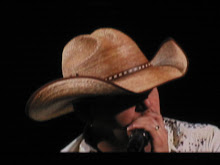When I first started blogging, figuring out how to use HMTL code was totally new to me (and quite frustrating). I now find it very fascinating that there are people out there that have come up with basically a new language. Although I still have a very basic knowledge of HTML (and many people will read this thinking I am not very sophisticated in the concept), I decided to write an article about some basic HTML code, including how to embed your blog address into an article or your blog, from a perspective of a newer HTML devotee.
I am writing this article from a very basic point of view, one that can be understood by even the newest Internet marketer. So if you are already fluent in HTML code, you might want to skip this article and wait for my 4th article: Blogging For Profit: More Free Ways To Drive Traffic To Your Blog Or Website.
TERMS:
HTML: HTML stands for Hyper Text Markup Language - the primary programming language used to write content on the Web.
URL: URL stands for Uniform Resource Locator. It is a Web site address. It is what lets you locate a particular site. For example, www.theaffiliate-code.com is the Web address of my web site.
BASIC CONCEPTS:
HTML code is no different from any other language. There are basic rules of every language. For HTML, you need to know that there is an opening and a closing character that lets the computer that you want to a particular item to be treated different.
Use carrots <> to open and close the command.
BOLD: If you want to bold a word or phrase, you use the following format: b Read Ron's Blog Here /b (with the carrots around the commands). That will tell the computer that the phrase "Read Ron's Blog Here" is to be bolded. Notice at the beginning of the phrase there is a b which is the opening command and at the end of the phrase, there is a /b command, which is the ending command.
Other commonly used basic HTML codes are as follows:
ITALICS: I and /I
PARAGRAPH BREAK: br and /br
CENTER: center and /center
Now lets go behind the code to see how you add this code to your blog or article to make it "active" and clickable. When composing your blog or article, the above tags are superficial and need to be activated. The tags tell the computer what to do with the sentence, i.e. bolding, make the word or phrase in italics, or making a new paragraph. Let us examine how to use HTML to get a link to your URL with a special name for that URL.
Let us take my Web URL www.theaffiliate-code.com and name it "Ron's Cool Web Site".
Here is your basic HTML link:
a href="PUT YOUR URL ADDRESS HERE"">PUT UNIQUE NAME FOR THE URL ADDRESS HERE /a (using a <> around a to open and around /a to close)
So here is what the link would look like for my URL and the name "Ron's Cool Web Site".
"a href="http://www.theaffiliate-code.com"> Ron's Cool Web Site /a" (using a <> around the a to open, and the /a to close)
When you copy that link to your blog or article, the reader will only see "Ron's Cool Web Site" and when you reader clicks on the link, he or she will be taken directly to your site (that is what is called an embedded link). Be sure and put your code into the HTML site where it is called for.
Cool Huh?
All you need to do now is practice and see how all of these concepts fit together. Blogging is not difficult once you have some basic concepts down. Then it is just repetition. Create, Write, Post and Repeat.
Oh, and let me put you on to the address of a good reference page I found:
http://www.tizag.com/htmlT/htmlbold.php
Good luck!
Ron Lewis searches for products that require little, if any, start up money so almost anyone can begin an online business with very little "out of pocket" money.
Web site: The Affiliate-Code.
Blog: The Affiliate-Code/Blog.
on is also an Ezine Expert Author: Click Here! to read his other articles.
-


For beginers HTML codersit is possible to recommend and this tutorial resourse - http://phpforms.net/tutorial.html
ReplyDelete